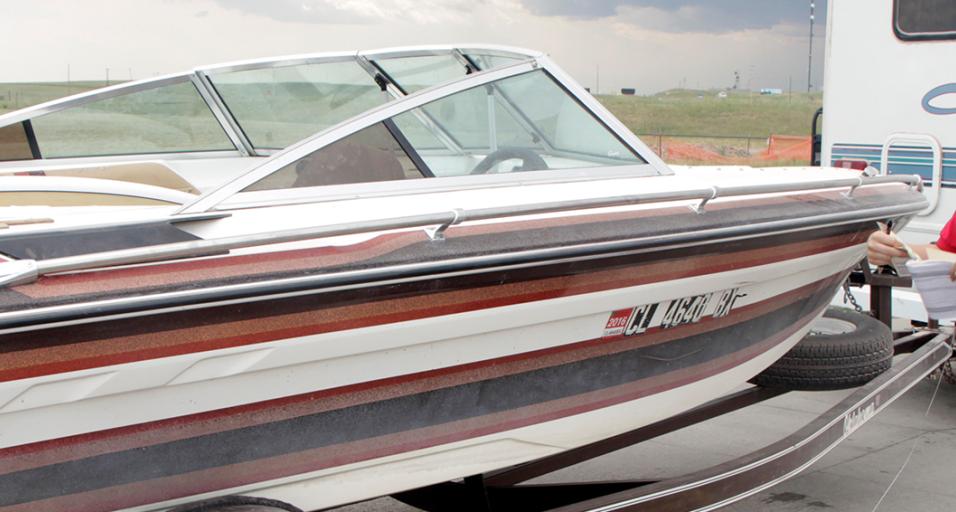Working together to keep Wyoming free of aquatic invasive species
We’re in the hottest part of the summer. To cool down, many of you head to the water to conquer the Cutt-Slam, float the river or boat with friends and family. No matter the hobby that draws you to one of Wyoming’s lakes or streams, the reason is the same: you enjoy this valuable resource.
We must be vigilant to protect these waters. The biggest threats to our state’s treasured and limited water resources are aquatic invasive species. We are especially concerned about zebra and quagga mussels which are not currently found in Wyoming. These aquatic animals, though tiny, have the potential for widespread, destructive impacts in our state.
Wyoming sits at the headwaters of the nation’s largest watersheds. AIS infested waters can impact downstream flows to the Missouri, Platte, Mississippi, Colorado, Snake and Columbia rivers. Locally, AIS can ruin fisheries, take away boating opportunities and choke off the water supply to irrigation systems, industrial pipelines and city water systems. AIS can also impact power production plants. We estimate managing a quagga or zebra mussel infestation would annually cost at a municipal water treatment facility from $40,000 to $215,000 per year. Dealing with an infestation at all 40 surface water plants in WY would range from $1.6 to $8.6 million annually
Because AIS in Wyoming can impact so many, there must be a collective effort to keep AIS out, especially during these summer months when we most frequently recreate at the water. At the Wyoming Game and Fish Department, we are developing rapid response plans for all at-risk waters to direct our efforts if AIS is ever found in the state. You can expect to see these in the coming months, but know that in the unfortunate event that Game and Fish has to respond to an infested water, there will be impacts to the people who use that resource. Throughout Wyoming and at the borders, Game and Fish continues to host AIS check stations where boaters must stop for inspections. If AIS is found, Game and Fish AIS specialists decontaminate boats and sometimes quarantine them until they are safe for Wyoming’s waters. Boaters who stop for this quick inspection make the difference for Wyoming. Last year, checkstations inspected 46,399 watercraft, and 461 were decontaminated for water onboard or suspected AIS.
Boaters fund the bulk of Wyoming’s efforts to keep AIS out when they purchase their required AIS decal each year. With the exception of Game and Fish license dollars and federal grants, the decal revenue is the only funding stream focused on keeping Wyoming AIS free. I extend a sincere thank you to all who support Wyoming’s conservation efforts for the benefit of the state.
Help us continue to keep this threat at bay now and for the future. Our efforts to date and moving forward have been or will be successful because people want to help, not because they have to. You can find information on our website about inspections and how to Clean, Drain and Dry your equipment at wgfd.wyo.gov/Fishing-and-Boating/Aquatic-Invasive-Species-Prevention.
We must be vigilant to protect these waters. The biggest threats to our state’s treasured and limited water resources are aquatic invasive species. We are especially concerned about zebra and quagga mussels which are not currently found in Wyoming. These aquatic animals, though tiny, have the potential for widespread, destructive impacts in our state.
Wyoming sits at the headwaters of the nation’s largest watersheds. AIS infested waters can impact downstream flows to the Missouri, Platte, Mississippi, Colorado, Snake and Columbia rivers. Locally, AIS can ruin fisheries, take away boating opportunities and choke off the water supply to irrigation systems, industrial pipelines and city water systems. AIS can also impact power production plants. We estimate managing a quagga or zebra mussel infestation would annually cost at a municipal water treatment facility from $40,000 to $215,000 per year. Dealing with an infestation at all 40 surface water plants in WY would range from $1.6 to $8.6 million annually
Because AIS in Wyoming can impact so many, there must be a collective effort to keep AIS out, especially during these summer months when we most frequently recreate at the water. At the Wyoming Game and Fish Department, we are developing rapid response plans for all at-risk waters to direct our efforts if AIS is ever found in the state. You can expect to see these in the coming months, but know that in the unfortunate event that Game and Fish has to respond to an infested water, there will be impacts to the people who use that resource. Throughout Wyoming and at the borders, Game and Fish continues to host AIS check stations where boaters must stop for inspections. If AIS is found, Game and Fish AIS specialists decontaminate boats and sometimes quarantine them until they are safe for Wyoming’s waters. Boaters who stop for this quick inspection make the difference for Wyoming. Last year, checkstations inspected 46,399 watercraft, and 461 were decontaminated for water onboard or suspected AIS.
Boaters fund the bulk of Wyoming’s efforts to keep AIS out when they purchase their required AIS decal each year. With the exception of Game and Fish license dollars and federal grants, the decal revenue is the only funding stream focused on keeping Wyoming AIS free. I extend a sincere thank you to all who support Wyoming’s conservation efforts for the benefit of the state.
Help us continue to keep this threat at bay now and for the future. Our efforts to date and moving forward have been or will be successful because people want to help, not because they have to. You can find information on our website about inspections and how to Clean, Drain and Dry your equipment at wgfd.wyo.gov/Fishing-and-Boating/Aquatic-Invasive-Species-Prevention.
Sara DiRienzo (307) 777-4540

